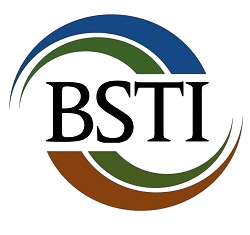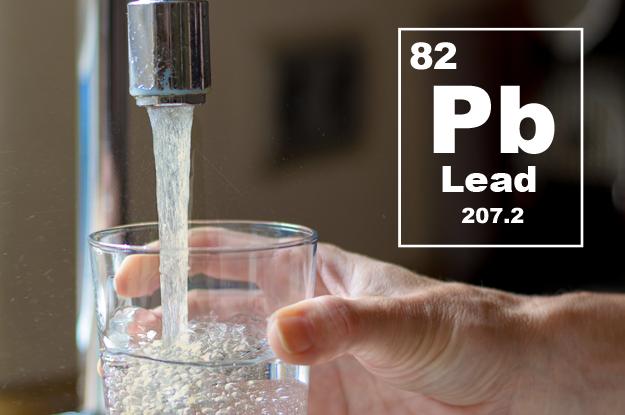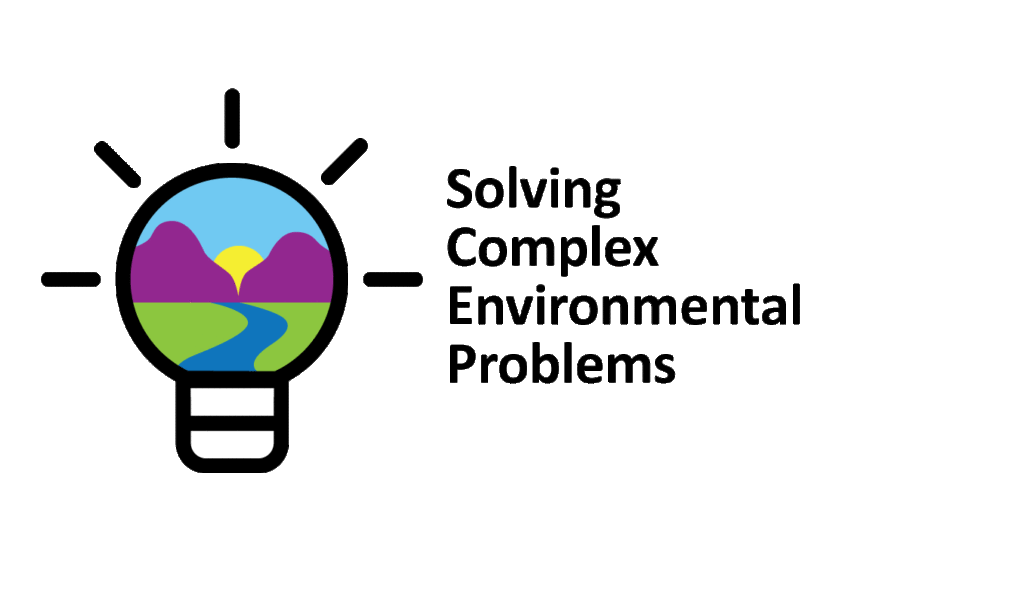
When buying or selling commercial and industrial real estate, stakeholders often conduct a wide range of inspections and inquiries as part of their due diligence. Legal, financial, zoning, permitting, and environmental risk are all typically considered. This article will offer tips for buyers and sellers when conducting environmental due diligence.
Why Conduct Environmental Due Diligence
Business owners have become accustomed to environmental regulations governing their manufacturing processes and storage of chemicals. However, such environmental regulations and practices are relatively new compared to the century of industrialization in the United States. Much of the industrial contamination found in our soil and water is the result of at-the-time, unregulated practices. Further, identification of emerging environmental contaminants continues as measurement techniques become more sensitive and sophisticated.
The reason for conducting environmental due diligence is to avoid (unknowingly) buying someone else’s issues. While there are some limited protections and paths of recourse after the fact, the “you bought it, you own it” principal applies most of the time. Failure to consider the environmental conditions of a property prior to a transaction can result in a disparity between actual value and the purchase price, impose regulatory encumbrances, limit the future use and value of the property, complicate the anticipated return on investment (ROI) and bring costly and distracting litigation. Which is why environmental due diligence is an essential part of commercial and industrial real estate transactions.
The typical starting point for environmental due diligence is the Phase I Environmental Site Assessment (ESA). This involves the buyer or buyer’s representative hiring a reputable consultant to conduct a prescribed scope of work that investigates the past and current use, if any, of materials of concern at the property and neighboring properties. The investigator will interview site personnel, collect historic directories, evaluate historic aerial photographs, investigate disposal practices, and visually inspect the property. Neighboring properties will be investigated through state and local files and databases. Soil and groundwater samples are not collected under the typical ESA so the findings tend to be subjective and qualitative. If recognized environmental conditions (RECs) are suspected, additional investigation may be recommended (i.e. Phase II activities).
In most states, there is no regulatory requirement to force stakeholders to conduct environmental due diligence. However, most lending institutions now have requirements as a part of loan approval, especially when the real estate is being used as collateral. However, given the financial risks involved, anyone buying or selling commercial or industrial real estate should recognize that it is just a good business practice to evaluate environmental conditions prior to settlement. Buyers have the primary burden of evaluating all potential risks associated with a particular real estate transaction. However, sellers can also take measures to increase the pool of interested buyers, facilitate the process, and get their asking price.
Tips for Buyers and Sellers
The following are environmental-related tips and tactics that we’ve found to make the biggest impact during a commercial or industrial real estate transaction.
- Bring in your experts early and build the right team
Once you’ve decided to sell or buy a property or business, identify your transaction support team as early as practicable. Your team will likely consist of an attorney, a real estate broker, a financial professional and support personnel such as environmental professionals, builders, land planners, architects, etc. Because environmental matters involve both technical and risk management angles, we often work closely with and frequently directly for attorneys. Your attorney is often the most well-connected and experienced with environmental consultants and will likely already have a reputable firm in mind. By building your team early, you will have an advantage of “seeing” potential hurdles and paths forward while the agreement of sale is being negotiated.
Buyers have the opportunity to conduct due diligence and therefore are most often engaged with environmental professionals. However, sellers often benefit from having environmental experts in their corner. Phase I ESAs are largely based on professional opinion and represent a buyer’s interests. Sellers should have knowledgeable representation to interpret the technical jargon and to help arrive at satisfactory final position. We recently supported the seller of a multi-tenant industrial complex in Pennsylvania. Because the out-of-state buyer’s consultant was not well-versed with how to apply state-wide cleanup standards, they incorrectly claimed that the property had issues requiring costly remediation. We were able to correct the understanding and demonstrate that our client’s property was compliant with prevailing regulations.
A buyer can be tempted to hire an environmental consultant who has prior experience working on the seller’s property. While the familiarity may seem like an advantage, we recommend that buyers retain consultants that are completely independent from the seller.
- Sellers should get out ahead of the due diligence process before listing the property for sale
Sellers usually know well in advance if they will be selling their property and/or business. Surprises during the transaction are rarely beneficial to either party. The early stages are the best time to assemble documents, conduct an internal audit of the facility and identify the key issues that will likely arise during the buyer’s due diligence. Often, a seller can close an information gap or take steps to mitigate an issue before engaging a buyer. By removing as many unknowns as possible, the seller can attract more competitive buyers, decrease transaction time, and set a more defensible asking price.
We were approached by a seller in New Jersey to conduct a pre-sale assessment of their environmental conditions in 2017. Because of a complicated ownership trail, their in-house environmental files were incomplete and fragmented. We requested and retrieved files from the NJDEP regulatory offices and were able to provide our client with an indexed package of all information on the public record. As part of the process, we were also able to resolve a few minor regulatory issues and data gaps. By doing this simple upfront work, we had an early look at the same information that the buyer’s Phase I team would see and were able to remove the “surprise” moments that could have otherwise disrupted the deal. It is a simple step that has tremendous benefits.
We are not suggesting that sellers contract their own Phase I ESA with the intention of offering it to prospective buyers. A Phase I ESA is a tool most aligned to represent a buyer’s best interest. A seller’s perspective is often much different. Further, we do not recommend that a buyer accept a seller’s Phase I because of this conflict of interest.
- Run all environmental due diligence processes through your attorney
Whether you are a seller or a buyer, it would be prudent to position your attorney between you and your technical team. This relationship can preserve the confidentiality of data and opinions produced as well as offer a risk management perspective into the overall advice to you.
This is especially the case where sellers are gathering information prior to offering a property for sale. Over many occasions, we’ve conducted regulatory file reviews and facility audits on behalf of a seller where legacy issues, permits, possible violations, and regulatory correspondence are retrieved. The environmental professional is capable of identifying the technical aspects and to what degree regulatory issues may be of concern. However, many of the findings require legal and regulatory interpretation in which the environmental professional is not qualified to handle, nor should they.
For buyers, your attorney can work with your environmental professional to identify the most significant risks identified during the due diligence process. Those risks should be quantified, to the extent practicable. Most frequently, the risks are valued based on the strategic objectives of the buyer which, once again, is beyond the expertise of the environmental professional.
- Have comprehensive language pertaining to environmental matters in the agreement of sale
When environmental matters arise during the due diligence process, it is most advantageous to have the rules and expectations clearly defined in the agreement of sale. To what degree will the investigation expand without seller approval? What is the agreed and acceptable end-point to any cleanup activities? Who will pay for additional investigation and cleanup costs? How will the gathered data be disclosed and shared? And most importantly, how will unresolved environmental risks be allocated and managed?
Too often, an agreement of sale will not include sufficiently robust environmental language. The result of which can be a tense negotiation over environmental risks with the entire transaction hanging in the balance.
- Sellers should consider whether you want to manage post-closure obligations or not
When environmental matters are discovered, they can either be resolved prior to closing or resolved after closing. Some matters can be “cleaned up” quickly. An underground storage tank can be removed for example. However, some environmental matters are more risk-related or require time beyond which the transaction is willing to withstand. In such cases, both sellers and buyers must agree on the mechanism to retain or transfer the risk and obligation. For this to happen, it is important that the environmental investigation proceed to a point where the risk can be quantified, to the degree practicable.
Where regulatory authority is involved, most states offer Buyer-Seller Agreements of which the state stands between the buyer and seller and the obligation of each party is clearly articulated. When a regulatory issue is not the main driver, there are many contractual and financial solutions such as escrow agreements, purchase price off-sets, insurance packages, or contractual agreements that can help get deals closed.
Our experience has been that sellers do not want to retain responsibility post-closing. Similarly, we typically see that buyers do not want the sellers to remain involved and prefer to control all activities that survive closing.
- Be the “User” even when your lending institution controls the process
Frequently, conducting environmental due diligence is a condition of loan approval. As a matter of convenience to the loan customer, a bank will contract directly with an environmental firm to perform a Phase I ESA. In this case, the bank is often named the “User” of the Phase I. Buyer’s should request to also be named a “User” or obtain a Reliance Letter that allows them to be a party to the Phase I ESA. This simple move can afford the buyer certain protections and recourses should unknown environmental conditions be identified in the future.
- Agree on how to handle all due diligence data prior to starting any investigative work
When a buyer begins environmental due diligence, the Phase I ESA is typically considered confidential and used for the benefit of the prospective purchaser. If further investigation is conducted such as soil and groundwater sampling, the resultant data can become problematic for the existing landowner. In many jurisdictions, information that indicates a non-compliant environmental condition must be acted upon in accordance with regulatory processes.
This issue is yet another reason to use your attorney as your due diligence quarterback. An attorney will work with the environmental professional to determine the particular rules within the regulatory jurisdiction and manage information accordingly. While there may be no way to avoid a mandatory reporting of data, having a data management plan in advance of investigative work will avoid unwelcomed “surprises”.
- Buyers should conduct the Phase I ESA within six months of the anticipated settlement date
The All Appropriate Inquiry (AAI) rule in CERCLA mandates a minimum scope of work for Phase I ESAs. Buyers should assure that the scope of work proposed by their environmental professional complies with the AAI rule and/or the ASTM Standard Practice 1527-13.
Generally, the usable “shelf life” of a Phase I report is 180 days. Between 180 days and one year, an existing Phase I can be reused provided it is updated appropriately. Buyers should plan ahead and negotiate a sufficient due diligence period. Depending on the complexity of the property, an environmental due diligence period of one month should be considered a minimum with three months being a more common timeframe. Very complex properties may require six months or more.
- Ask your consultant to explain what their findings really mean to you
Users of Phase I ESA reports should press their consultants to frame issues within context of the property use and potential risk to the parties. For example, we have a client who wanted to purchase a commercial property in Delaware, but a neighboring dry-cleaning facility had caused the shallow groundwater in the area to become contaminated. If the issue was left there, the buyer would rightfully think his deal wasn’t favorable. However, our evaluation of the issue identified that potable water was provided to the area by public utility and the affected shallow groundwater flow direction was away from our client’s site. Furthermore, there was never any use of dry-cleaning solvents on our client’s property so it was highly unlikely that our client would ever be held responsible for the nearby contamination. The identification of contaminated groundwater at an adjacent property could represent a deal killer. But when discussed in context of risk to our client, a different story surfaced. Our client purchased the property. - Reduce risk by reducing the most impactful uncertainties
With regard to environmental matters, it is unlikely that you will get a precise answer to all of the questions. We simply can’t know what is going on down to the parts per million range under a building or in an aquifer without conducting a fairly comprehensive study. A Phase I ESA is by no means a comprehensive study. The environmental due diligence process is a phased approach that starts in general inquiry and moves toward more detailed investigation. As potential environmental issues are identified, additional time and funding is required to determine if the potential issue is a real issue (e.g., Phase II Investigation). Defining the extent and magnitude of a real issue may require even more time and funding. This process can be frustrating to those wanting answers and paying the bill. It is important to challenge your environmental professional to determine if additional expenditure will justify the value of additional information. The delta between what is known and what is not known is considered risk. Risk tolerance can vary widely among stakeholders and circumstances. Through a combination of information and risk management tools, the key is to reduce the risk to within a calculated and acceptable level for your transaction.
Brownfield Science & Technology, Inc. (BSTI) is an earth sciences company specializing in environmental assessment, remediation and consulting services for public and private clients. We use science, human talent and state-of-the-art tools to guide our clients through environmental challenges. Whether you are trying to maintain compliance at your facility, looking to buy or revitalize an industrial property or responding to regulatory obligations, we know that you have more important things to do than tackle the situation yourself. If you need expertise, responsiveness and been-there-done-that capability, then we may be the right firm for you.
Author:
John Kollmeier
Senior Vice President
610.806.5184






